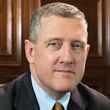President's Message: The Fed Is Not "Missing on the Dual Mandate"
It has become commonplace in monetary policy discussions in the U.S. to say that the Fed is "missing on both sides of its dual mandate."[1] This is often taken to imply that current Fed policy is necessarily far away from an ideal or optimal policy. I do not think that such an inference necessarily follows. The notion that one can easily infer something about the sub-optimality of policy by observing current levels of inflation and unemployment is imprecise. In fact, observing that the Fed is "missing on both sides of the mandate" says little or nothing about the appropriateness of current policy.
The Fed famously has a directive that calls for it to maintain stable prices as well as maximum employment, along with moderate long-term interest rates. Since unemployment in the U.S. is currently high by historical standards, at 8.1 percent in August, many observers argue that the Fed must not be "maximizing employment." In addition, as of July, the personal consumption expenditures price index has increased by about 1.3 percent in the past year. Since the Fed's stated inflation target is 2 percent, then, by the numbers, the Fed is "missing on both sides of the mandate." Many then argue that this observation necessarily means that current monetary policy is sub-optimal, or worse, badly off track. The argument is that, under a proper monetary policy, when unemployment is above the natural rate, inflation should be above the policymaker's inflation target, not below.
I disagree with this view, as I do not think there is much in the macroeconomic adjustment literature to support it. Here is my story: The U.S. economy was hit by a large shock in 2008 and 2009. This large shock lowered output and employment far below historical trend levels while also reducing inflation substantially below 2 percent. The key question is: How do we expect these variables to return to their long-run or targeted values under appropriate monetary policy?
The answer from the macroeconomic literature is that it is reasonable to believe that output, employment and inflation will return to their long-run or targeted values slowly and steadily. We refer to this type of convergence process as being "monotonic": The shock knocks key variables off their long-run values, and the variables gradually return after the shock, assuming the policymaker runs a reasonable monetary policy. Other dynamics would be disconcerting. We would not want or expect key variables to move wildly about their long-run values under an appropriate monetary policy.
Given this type of adjustment, then, it is clear that the Fed could be "missing on both sides of its mandate" during the entire time it takes the economy to return to normal, even when the monetary policy in place is very good. In fact, missing on both sides of the mandate is exactly what one would expect under an appropriate monetary policy. Furthermore, the literature suggests that the adjustment times are quite long.
The belief that convergence should be monotonic is supported by results from the medium-sized macroeconomic framework of Frank Smets and Raf Wouters.[2] This is an important benchmark quantitative model for monetary policy.[3]
To argue against monotonic convergence in the current environment would imply that when unemployment is above the natural rate, monetary policy can only be appropriate if inflation is above the policymaker's inflation target, not below. On the face of it, this does not completely make sense, since the U.S. has actually experienced periods when both inflation and unemployment were above desirable levels. In the 1970s, this phenomenon was dubbed stagflation, and monetary policy has been regarded as exceptionally poor during that period.
Some may argue that real output and employment in the U.S. have not returned to the pre-crisis path that seemed to prevail in the mid-2000s. Indeed, total nonfarm payroll employment today remains about 4.7 million less than the peak in January 2008. I have argued that this is also to be expected because, as the work of Carmen Reinhart and Kenneth Rogoff has documented, recoveries in the aftermath of financial crises tend to be especially protracted.[4] The financial crisis and the collapse of the housing bubble likely did some permanent damage to the U.S. economy.
There are, of course, some important caveats to my argument. In reality, unlike the models, other shocks occur during the long adjustment process—this tends to muddy the waters as to what adjustments are actually occurring. Furthermore, current U.S. monetary policy has unconventional features that have not been present in the past. But still, many estimated macroeconomic models do suggest that key variables adjust to shocks in a monotonic way even under very good monetary policy. This indicates to me that current monetary policy in the U.S. remains broadly appropriate: It has produced the basic pattern of adjustment that we should expect based on available research.
Endnotes
- This column is adapted from my Financial Times op-ed, "Patience Needed for Fed's Dual Mandate," Sept. 19, 2012. [back to text]
- See Smets, Frank; and Wouters, Rafael. "Shocks and Frictions in U.S. Business Cycles: A Bayesian DSGE Approach." American Economic Review, June 2007, Vol. 97, No. 3, pp. 586-606. [back to text]
- For a description of the model, see my 2012 Economic Synopses essay, “Monetary Policy and the Expected Adjustment Path of Key Variables.” http://research.stlouisfed.org/publications/es/article/9490 [back to text]
- See Reinhart, Carmen M.; and Rogoff, Kenneth S. This Time Is Different: Eight Centuries of Financial Folly. Princeton University Press, 2009. [back to text]
Views expressed in Regional Economist are not necessarily those of the St. Louis Fed or Federal Reserve System.
For the latest insights from our economists and other St. Louis Fed experts, visit On the Economy and subscribe.
Email Us



